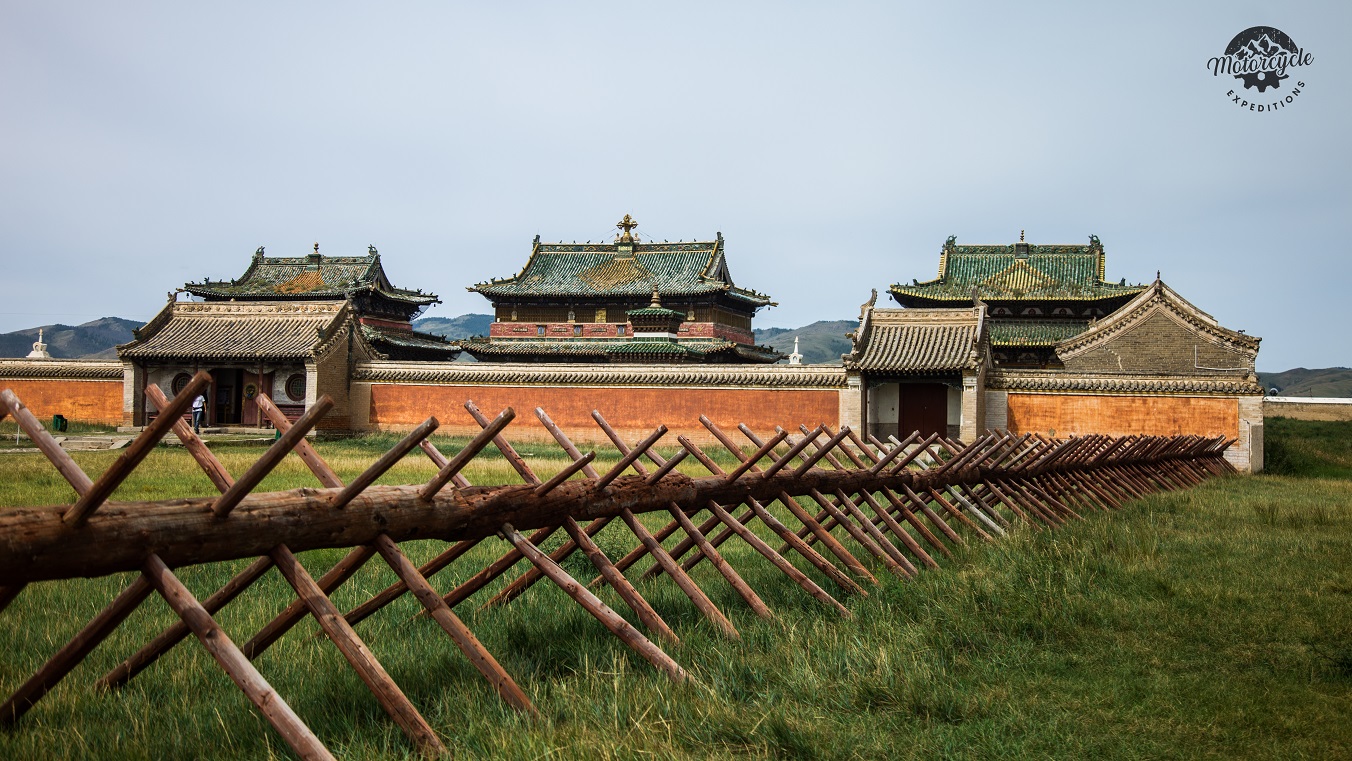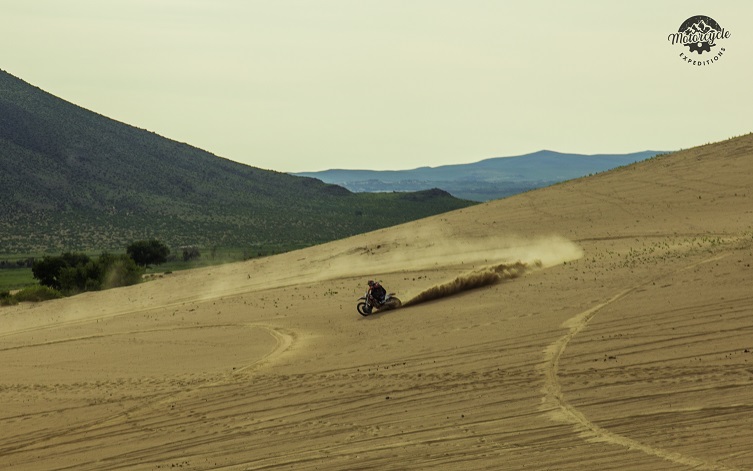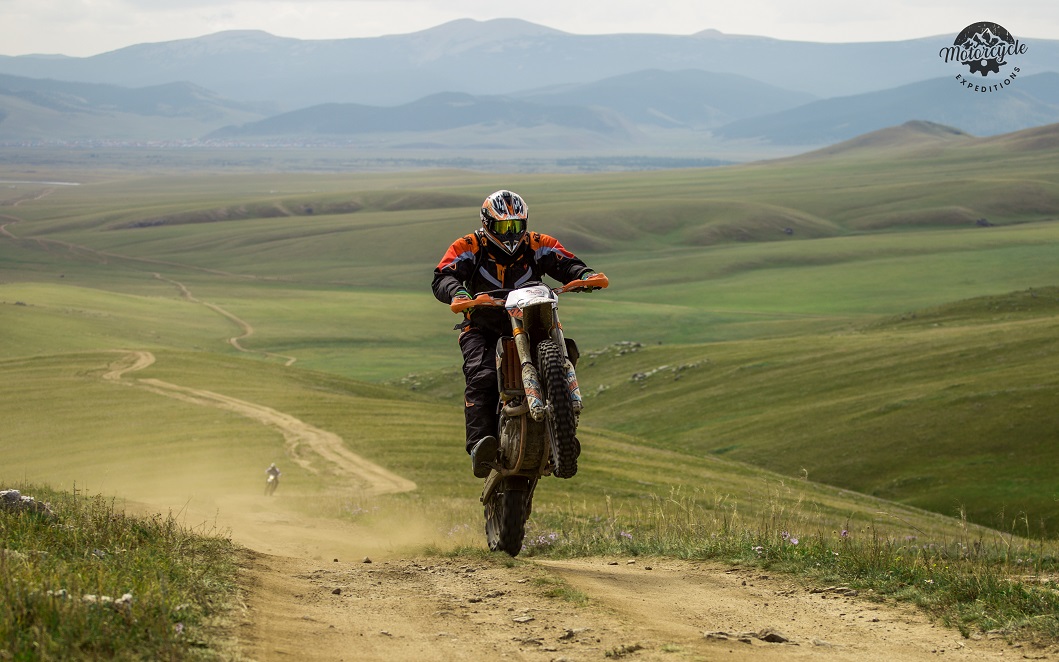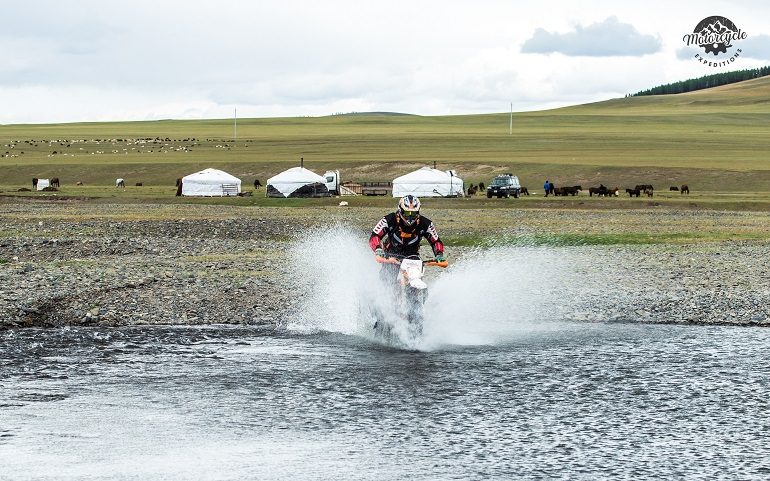Mongolia is truly one of the world’s last undiscovered travel destinations and the safest country to visit. It is a land where you can experience wide open spaces, cobalt blue skies, forests, deserts, crystal clear rivers and lakes, and the traditional hospitality of the nomads. Permanent dwellings are few and far between, fences even fewer and the land is owned by the people, like one large National Park. As a tremendous destination to experience the outdoors, Mongolia also boasts a unique history dating back to the Mongol Empire of Genghis Khan. Simply put, it is a land of adventure, horses, nomads, and blue sky. We ride across Mongolia on KTM & Royal Enfield.
Motorcycle ride in MONGOLIA!!! is a fantastic adventure weaving through spectacular valleys, crossing beautiful rivers and camping in remote areas. You will see ground squirrels, vultures, herds of yak, try your hand at fishing and these are just a few of the activities on this awe inspiring trip.

This is an exotic and esoteric land so if you are expecting to get whatever you desire you may be disappointed. It is a good idea to check and see if your travel insurance covers these motorcycle tours. Some insurance companies may prefer tours with guides rather than self-driving which is risky in such harsh terrains.
If you don’t know the language, request for a translator to join you on tour. Translators can travel with the tour guide and cook in the service car. If exotic foods are not your ‘cup of tea’, then ensure that the cook knows how to cook continental or simple American dishes. Trust me, you don’t want an upset tummy in the middle of the desert.
Some tour operators include the price of hotels in the package. But if you want to save money then do some research and book them yourself. Just make sure that the hotels are located close to each halt so that you don’t waste time going up and down.
Motorcycle tours in Mongolia are very different from the rest of the world. They need more expertise, riding skill, comfortable and functional riding gear, and experience with different off-road terrains to make them a success. It is a good idea to opt for a professional company with an outstanding reputation. They will not only offer well planned tours but also ensure excellent rider safety and security.
Guided motorcycle tours ensure hassle-free-motorcycle-holidays . All our motorcycle trips around Mongolia are fully guided motorcycle trips, including back-up vehicle(s), experienced motorcycle mechanics and a professional guide to visit places you may get lost trying to find.

What to pack for a Mongolian adventure?
- Large, flexible bag
It’s usually better to have a large, flexible bag instead of a hard suitcase to keep your main luggage in, because you will likely load it from luggage compartments to cars and so forth multiple times. You won’t be carrying it around with you every day however, so it depends on the specificity of your trip. If you have pack animals (usually horses, or camels in some cases) carrying your luggage, soft bags are recommended.
- Backpack or small bag
Backpack and small bag (belt pouch/ hip bag/ bum bag/etc): Besides putting your daily items in a backpack, having a small bag with your valuables (e.g. wallet and travel documents) is handy. As far as dimensions go, it should be small enough to carry around at nearly all times and big enough to fit ALL your valuable items.
- Headlamp
This is extremely useful at night and while tenting. Headlamps are priceless when reading at night as electricity is nearly unavailable in the countryside except in soum (town or administrative district) centers, where coverage is still somewhat unpredictable.
- Rubber slippers
These are a must, especially when using showers in most ger camps.
- Binoculars, camera, and camera accessories
Abundant wildlife spotting requires active searching in many cases, so if you really want to make the most of your time, binoculars are irreplaceable. If you take photos and/or use special camera accessories, be sure not to forget them as it might not be easy to find the right materials. Ulaanbaatar is the first and last resort for photo equipment and binoculars.
- Personal medication
Although we provide first aid kits with basic supplies, it is forbidden to dispense medication of any kind by law. Make sure to bring your own medications, based on your traveling experiences and personal knowledge of your current health.
- Warm coat/jacket and layers
The weather in Mongolia is unpredictable, and nights have been known to dip below freezing even in the summer in some regions. Therefore multiple layers are always recommended. You can always take layers off or put them back on. Raincoats and ponchos are not only a must for occasional rainy weather, but they can be good insulators when placed outside your sleeping bag.
- Trekking shoes
These are very important in all regions of the countryside. From the Altai mountain range to the Gobi Desert, all terrains are truly wild and present their own challenges and diverse fauna and flora. It is crucial to keep these(trekking shoes) on hand at all times as you traverse each region.
- Riding boots for horse trekking
Unless you’re wearing chaps, tall riding boots are invaluable to protect your legs from chafing.
- Ziploc bags
Besides their usual function, putting valuables (documents, phone, etc) in Ziploc bags is a good idea to protect them from damaging rain and dust.
What is the weather like in Mongolia?
The average temperature in January ranges from around -32 °C (-26 °F) in the coldest areas of the north, to around -15 °C (5 °F) in the south. The temperature does not necessarily decrease with altitude, on the contrary, owing to the phenomenon of the temperature inversion, it can even increase with altitude. In fact, the coldest areas of the country are the valleys between the mountains of the north, at least in winter. Conversely, the temperature in summer is higher in the south and at low altitude. At 1,500m (5,000ft) above sea level, the daily average in July is around 13 °C (55.5 °F) in the far north, around 15 °C (59 °F) in the center-north, and 20 °C (68 °F) in the south. At 1,000 meters (3,300 feet), the daily average ranges from 16 °C (61 °F) in the north to 23 °C (73 °F) in the south. So, only at the lowest altitudes and in the south, the summer can be considered hot. The areas located at low altitudes, around a thousand meters or less, are not very large, so the summer nights in most of Mongolia are generally cool (sometimes even cold) and the days are pleasant. However, in the whole country, heat waves with peaks of 35/37 °C (95/99 °F) can occur, at least below 1,500 meters (5,000 feet).
The northern part of Mongolia lies in the permafrost area (the southern limit is more or less at the latitude of the capital), where the ground below a certain depth, remains frozen throughout the year, and makes it difficult to build houses and infrastructure as well as to dig for extraction of raw materials.


